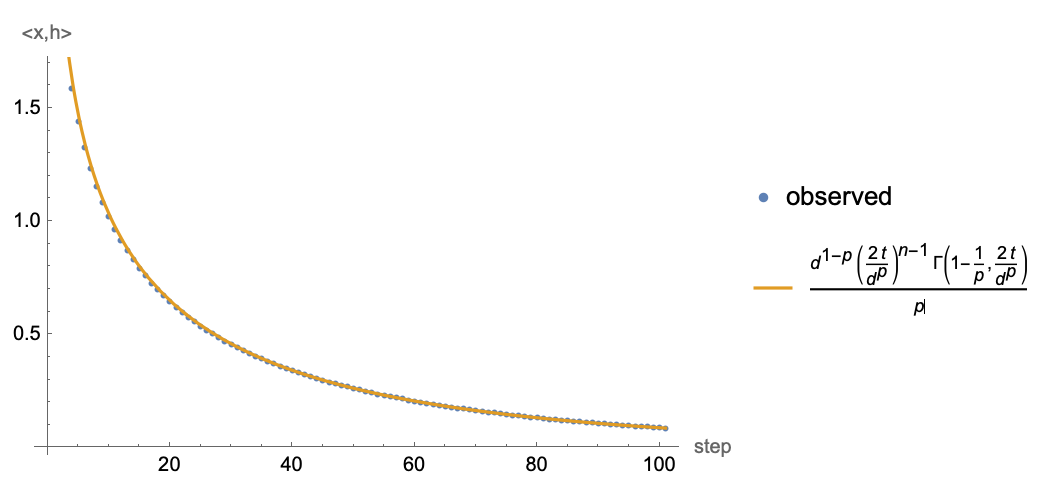I'm trying to model convergence of $x\in \mathbb{R}^{+d}$ which follows the following recurrence
$$x\leftarrow (\mathbf{1}-h)^2 x + h\langle x, h\rangle$$
Here $\mathbf{1}$ indicates a vector of $1$'s, $v^2$ means squaring each component of vector $v$ and $h\propto (1^{-p},2^{-p},\ldots ,d^{-p})$ for some $p\in (1,2)$.
I know that continuous approximation $x_t\approx \exp(At)x_0$ holds and need to know how trajectory of $\|x_t\|_1$ depends on $p$ in the case of $t<d$ and $d\to\infty$
Things are easy if we didn't have the the $h\langle x, h\rangle$ term (mixing term). $A$ is diagonal, and approximating $\|x_t\|_1$ with an integral I get formulas which match observed behavior very well.
However, keeping the mixing term makes things much harder to handle. System now evolves as $\exp(At)$ where $A$ is a diagonal+rank1 matrix. Integration approach as before gives formula which is cumbersome. There's also numeric approach which works but doesn't give insight on the role of $p$.
Any advice on the approaches to follow to get a nice upper bound on $\|x_t\|_1$ in terms of $p$?
Motivation: this equation models expected value of iterated Gaussian linear system like this for non-isotropic Gaussian case. Used to model training curve of neural network training.

